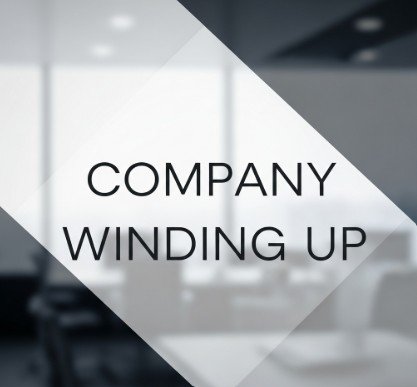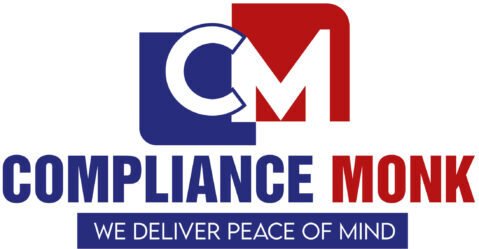
Closing a company isn’t just about locking the doors and walking away—it’s a structured legal process that ensures all financial obligations are met, assets are liquidated, and stakeholders are informed. Whether you’re choosing to shut down voluntarily or facing compulsory liquidation, following the right procedure is crucial to avoid legal complications.
Table of Contents
What is Company Winding Up?
Winding up a company refers to the formal process of closing its operations, selling assets, paying off liabilities, and distributing the remaining funds to shareholders. Once completed, the company is legally dissolved and ceases to exist.
According to Section 2(94A) of the Companies Act, 2013, winding up can occur either under the provisions of the Companies Act or through liquidation under the Insolvency and Bankruptcy Code, 2016 (IBC).
Types of Company Winding Up
A company can be wound up through the following methods:
1. Voluntary Winding Up
When a company voluntarily decides to shut down, either due to inactivity, financial concerns, or any other reason, it follows a legal process that includes liquidating assets and settling liabilities.
2. Compulsory Winding Up (Tribunal Ordered)
A company may be forced into winding up by the National Company Law Tribunal (NCLT) due to non-compliance, insolvency, or illegal activities.
3. Winding Up Under Court Supervision
This is a hybrid method where voluntary winding up occurs but under the oversight of a court to protect stakeholders’ interests.
Voluntary Winding Up of a Company
A company can voluntarily wind up under two conditions:
- By Special Resolution – Shareholders pass a resolution agreeing to close the company.
- As per the Articles of Association (AOA) – If the AOA specifies conditions under which the company must wind up, those are followed.
Documents Required for Voluntary Winding Up
- Special Resolution (Form-26): Official confirmation of the company’s decision.
- Declaration of Solvency (Form-107): Statement confirming the company can clear its debts.
- Directors’ Affidavit: Verification of financial statements.
- Liquidator’s Consent: Agreement from the appointed liquidator.
- Notice of Winding Up Resolution: Official notification published in the Gazette.
- Final Liquidator’s Report: Detailed report outlining financial settlements.
Procedure for Voluntary Winding Up
- Declaration of Solvency – Directors assess the company’s financial standing and declare its ability to pay all debts.
- Shareholder Approval – A Special Resolution is passed for winding up and appointing a liquidator.
- Public Notification – The decision is published in the Official Gazette and newspapers within 10 days.
- Creditor Notification & Approval – If creditors exist, they must approve the winding-up process.
- Liquidation of Assets – The liquidator sells off assets and settles debts.
- Final Report & Submission – After completing settlements, a final report is submitted to the Registrar of Companies (ROC).
- Company Dissolution – The company’s name is removed from the ROC, marking the legal end.
Compulsory Winding Up by a Tribunal
The National Company Law Tribunal (NCLT) may order a company’s closure due to:
- Unpaid debts – If the company is unable to pay its creditors.
- Non-compliance with ROC filings – Failure to file financial statements for five consecutive years.
- Fraudulent Activities – If the company is involved in illegal actions.
- Tribunal’s Discretion – If it is in the public interest to dissolve the company.
Procedure for Compulsory Winding Up
- Filing a Petition – A creditor, shareholder, or regulatory authority files a winding-up petition with the Tribunal.
- Review & Approval – The Tribunal examines financial statements and other reports before passing a winding-up order.
- Appointment of Liquidator – A liquidator is assigned to oversee asset sales and debt settlements.
- Final Report Submission – The liquidator submits the winding-up report to the ROC.
- Dissolution of Company – The company’s name is officially removed from records.
Winding Up Under Court Supervision
If creditors or stakeholders have concerns about mismanagement in a voluntary winding-up, they can request court supervision. This ensures transparency and protects the interests of all parties involved.
Impact of Winding Up
For the Company
- The company ceases all business operations except for activities related to liquidation.
- It retains legal entity status until final dissolution.
For Shareholders
- Any change in ownership or share transfers is void unless approved by the liquidator.
- Shareholders are last in line for payouts after debts are cleared.
For Creditors
- They must file claims with the liquidator to recover outstanding dues.
- Legal actions against the company cannot proceed without court approval.
For Directors & Management
- All powers of directors are suspended, and the liquidator takes control.
- Directors may face legal consequences if found guilty of misconduct.
For Assets
- Company property is liquidated, and proceeds are first used to pay creditors, with any surplus going to shareholders.
Role of a Liquidator
A liquidator is responsible for:
- Selling off assets at fair market value.
- Settling creditor claims.
- Preparing reports on asset distribution.
- Filing necessary documentation with the Tribunal and ROC.
In compulsory winding up, the liquidator acts under the court’s supervision.
How Long Does Winding Up Take?
- Voluntary Winding Up – 3 to 6 months (depending on complexity).
- Compulsory Winding Up – 1 year or more due to legal proceedings.
Why Choose Compliance Monk for Company Winding Up?
Closing a company isn’t just about shutting down operations—it involves legal compliance, financial settlements, and regulatory approvals. Compliance Monk makes the process hassle-free by:
✔ Expert Legal Assistance – Handling documentation, filing, and compliance.
✔ Seamless Liquidation – Managing asset sales and settlements efficiently.
✔ End-to-End Support – From resolution drafting to final dissolution.
✔ Minimizing Legal Hassles – Ensuring a clean exit without penalties.
Planning to wind up your company? Contact Compliance Monk for expert assistance.
FAQs on Winding Up of a Company
1. What is company winding up?
Winding up is the legal process of closing a company by liquidating its assets, paying off debts, and distributing any remaining funds to shareholders before dissolving the company.
2. What are the types of company winding up?
There are three types:
- Voluntary Winding Up – Initiated by the company’s members or creditors.
- Compulsory Winding Up – Ordered by the National Company Law Tribunal (NCLT).
- Winding Up Under Court Supervision – Voluntary winding up under judicial oversight.
3. When should a company opt for voluntary winding up?
A company may voluntarily wind up when:
- It has achieved its purpose and is no longer needed.
- It is financially solvent but wants to cease operations.
- The shareholders decide it is in their best interest.
4. What is the role of the liquidator in winding up?
The liquidator manages the winding-up process, including selling assets, settling debts, handling creditor claims, and distributing remaining funds to shareholders.
5. What happens to outstanding company debts during winding up?
All debts must be settled before distributing assets to shareholders. If the company is insolvent, the creditors get priority in asset distribution.
6. Can a company be forced to wind up?
Yes, if the company:
- Fails to pay its debts.
- Has not filed financial statements for five consecutive years.
- Is engaged in fraudulent activities.
- Is deemed necessary for the public interest by the NCLT.
7. How long does it take to wind up a company?
- Voluntary Winding Up – Typically 3 to 6 months.
- Compulsory Winding Up – Can take a year or more due to legal proceedings.
8. What are the consequences of winding up a company?
- The company ceases operations.
- Directors lose control, and a liquidator takes charge.
- Creditors and shareholders receive payments as per legal priority.
- The company is legally dissolved and removed from the Registrar of Companies (ROC).
9. Can the winding-up decision be reversed?
In some cases, voluntary winding up can be halted if all stakeholders agree and legal formalities are followed. However, compulsory winding up is difficult to reverse once ordered by the tribunal.
10. What are the penalties for not following the winding-up process properly?
Failure to comply with legal requirements can result in penalties for directors, financial liabilities, and possible legal action by creditors or regulatory authorities.
11. How do I get started with winding up my company?
You can start by consulting with Compliance Monk for a detailed assessment and expert assistance to ensure a smooth and legally compliant winding-up process.
